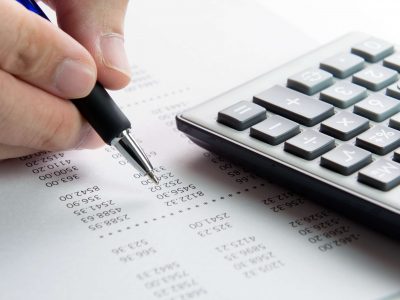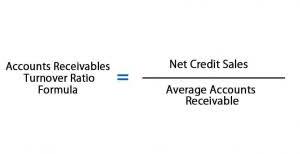Content

Depreciation reflects how the value of an asset is used up over time. At the beginning of the year, Company A purchases a new van for $20,000. Company A estimates that the vehicle’s useful life is 10 years with no residual value. This post is to be used for informational purposes only and does not constitute legal, business, or tax advice. Each person should consult his or her own attorney, business advisor, or tax advisor with respect to matters referenced in this post. Bench assumes no liability for actions taken in reliance upon the information contained herein. ScaleFactor is on a mission to remove the barriers to financial clarity that every business owner faces.
For instance, automobiles depreciate over five years, and commercial real estate is depreciated over 39 years. Now, as Waggy Tails will use the equipment for the next ten years, it will expense the cost of the equipment for the entire period.
Trending Articles
Accumulated depreciation is used to calculate an asset’s net book value, which is the value of an asset carried on the balance sheet. The formula for net book value is cost an asset minus accumulated depreciation. Company A buys a piece of equipment with a useful life of 10 years for $110,000. The equipment is going to provide the company with value for the next 10 years, so the company expenses the cost of the equipment over the next 10 years. Straight-line depreciation is calculated as (($110,000 – $10,000) / 10), or $10,000 a year.
- For example, say a company was depreciating a $10,000 asset over its five year useful life with no salvage value.
- The estimate for units to be produced over the asset’s lifespan is 100,000.
- In this method, you depreciate an asset at an equal amount over each year across its useful life.
- For every asset you have in use, there is the “original basis” and then there’s the “accumulated depreciation” .
- If you’re using the wrong credit or debit card, it could be costing you serious money.
- However, accumulated depreciation is reported within the asset section of a balance sheet.
For example, if a company purchased a piece of printing equipment for $100,000 and the accumulated depreciation is $35,000, then the net book value of the printing equipment is $65,000. Accumulated depreciation totals depreciation expense since the asset has been in use. Thus, after five years, accumulated depreciation would total $16,000. Depreciation is recorded to tie the cost of using a long-term accumulated depreciation capital asset with the benefit gained from its use over time. Financial analysts will create a depreciation schedulewhen performing financial modeling to track the total depreciation over an asset’s life. Subtract the asset’s salvage value from its total cost to determine what is left to be depreciated. As an asset drops in value over time, this is marked as depreciation for accounting purposes.
Accumulated Depreciation Explained
This is because the value of that that asset is determined by what the market is willing to pay for it .In other words, the carrying value of an asset , is not the value of the asset. The value of the asset is equal to what it would sell for on the open market. Having this $1,000 expense on the income statement allows you to match the cost of the asset with the revenues it produces. This section contains frequently asked questions when managing accumulated depreciation account codes. Accumulated depreciation is not a current asset, as current assets aren’t depreciated because they aren’t expected to last longer than one year. Other times, accumulated depreciation may be shown separately for each class of assets, such as furniture, equipment, vehicles, and buildings.
International Seaways : Unaudited Condensed Consolidated … – Marketscreener.com
International Seaways : Unaudited Condensed Consolidated ….
Posted: Fri, 23 Dec 2022 22:05:14 GMT [source]
The straight-line method is the simplest method for calculating accumulated depreciation. In this method, you depreciate an asset at an equal amount over each year across its useful life. Now, consider that Waggy Tails decides to use the equipment at the end of 10 years. Even then, the accumulated depreciation cannot exceed the asset’s original cost, despite remaining in use after its estimated https://www.bookstime.com/ useful life. The journal entries for the accumulated depreciation will help you determine how much of an asset has been written off and its remaining useful life. Typically, there’s an original basis for every asset you have in use, equal to the original purchase price. Then, there’s accumulated depreciation or the value lost in the asset, which is considered an expense on your books.
What Is Accumulated Depreciation Classified as on the Balance Sheet?
After the 5-year period, if the company were to sell the asset, the account would need to be zeroed out because the asset is not relevant to the company anymore. Therefore, there would be a credit to the asset account, a debit to the accumulated depreciation account, and a gain or loss depending on the fair value of the asset and the amount received. These matching expenses and revenues must be recorded on the balance sheet during the same accounting period.

Depreciation expenses appear on the income statement during the recording period, while accumulated depreciation shows up on the balance sheet under related capitalised assets. You’ll note that the balance increases over time as depreciation expenses are added. Accumulated depreciation is an asset account with a credit balance known as a long-term contra asset account that is reported on the balance sheet under the heading Property, Plant and Equipment. The amount of a long-term asset’s cost that has been allocated, since the time that the asset was acquired. Small businesses have fixed assets that can be depreciated such as equipment, tools, and vehicles. For each of these assets, accumulated depreciation is the total depreciation for that asset up to and including the current accounting period. Accumulated depreciation is the total amount of depreciation expense allocated to each capital asset since the time that asset was put into use by a business.
How to calculate accumulated depreciation formula
Second, on a related note, the income statement does not carry from year-to-year. Activity is swept to retained earnings, and a company “resets” its income statement every year. Meanwhile, its balance sheet is a life-to-date running total that does not clear at year-end.
What is a Accumulated depreciation on a balance sheet?
The accumulated depreciation number on the balance sheet is the cumulative total of all depreciation that has been taken as an expense on the income statement from the time the company acquired the asset until the date of the balance sheet.
